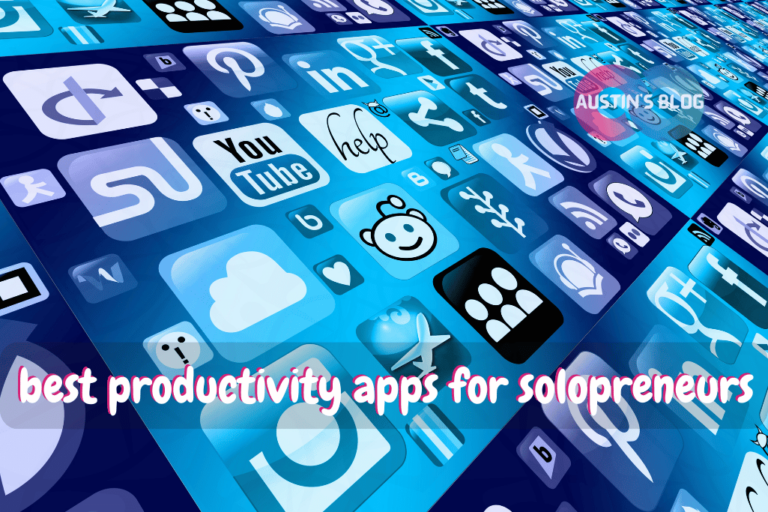2024 Marketing Trends and Diversity: Embracing Change for Success
Introduction
Buckle up, marketing mavericks! We’re about to blast off into the future of our industry, and let me tell you, it’s a wild ride!
This ride will explore Marketing Trends and Diversity and even venture beyond that, way into the future.
Did you know that according to a mind-blowing report by Gartner, by 2025, 80% of marketers who have invested in personalization will abandon their efforts due to lack of ROI, poor customer data management, or both [1]?
But don’t panic! We’re here to navigate these choppy waters together.
From AI-powered everything to the rise of inclusive marketing, we’re diving deep into the trends that are reshaping our field.
And here’s a teaser – diversity isn’t just a buzzword, it’s the secret sauce of innovation!
Ready to peek into the crystal ball of marketing and discover how a kaleidoscope of perspectives can skyrocket your success?
Let’s jump in and shape the future of marketing together!
The AI Revolution: Marketing’s New Frontier
Artificial intelligence is changing how businesses market their products and engage with customers. With AI, you can make your marketing efforts more personalized, efficient, and ethical.
Let’s dive into some key areas where AI is making a big impact.
Predictive Analytics And Hyper-Personalization
AI tools are great at gathering and analyzing data. This means you can predict what your customers might want or need before they even think about it.
By using predictive analytics, marketers can tailor their messages to different customer segments.
Hyper-personalization strategies involve customizing everything from emails to product recommendations. For instance, when Netflix suggests a show you’ll love, that’s AI in action. Imagine knowing exactly what your customers want—AI makes this possible.
AI-Powered Content Creation And Curation
Creating engaging content can be tough. AI is here to help. It can assist in crafting blog posts, social media updates, and more.
AI-powered content creation tools can suggest topics or even write the content itself. Companies are using these tools to save time and focus on strategy.
AI curates content too, identifying what resonates with your audience.
Think about how Spotify creates playlists just for you. Using AI in marketing predictions can keep your content fresh and relevant.
Chatbots And Conversational Marketing Evolution
Have you ever chatted with a bot online? Chatbots are becoming more and more human-like. They handle customer inquiries day and night.
This means your customers get help whenever they need it. Conversational marketing trends include using these bots to create engaging experiences.
Chatbots, aided by AI, can learn from interactions and improve over time. They help in guiding customers through purchases or providing post-sales support, enhancing the overall experience.
Ethical Considerations And The Human Touch In AI Marketing
AI’s power brings ethical considerations. How do we use data without compromising privacy?
Maintaining a human touch in AI marketing is vital. It ensures that customers feel valued rather than just data points.
Marketers are keen on ethical AI in advertising to foster trust. It’s important to have a balance, where technology enhances human interaction.
Always remember, AI should support—not replace—the personal connections you build with your customers.
Immersive Experiences: The Next Level Of Customer Engagement
As technology continues to evolve, marketing is also shifting. Immersive experiences using VR and AR are more than just trends—they’re opportunities to create engaging connections with consumers.
These innovations in the metaverse, sensory marketing, and balancing digital with real-world interactions provide exciting avenues for brands.
Virtual And Augmented Reality In Marketing Campaigns
Virtual Reality (VR) and Augmented Reality (AR) are game-changers in marketing. Imagine walking into a room and being transported into a themed world that showcases a brand’s story.
VR marketing campaigns allow consumers to explore products in a simulated environment, increasing engagement and conversions.
Casual platforms like social media are embracing AR filters, making interactive advertising easier and more fun. Brands can leverage platforms like TikTok for creative AR content that aligns with consumer interests.
The Rise Of The Metaverse And Its Marketing Implications
The metaverse is transforming how brands interact with consumers. Metaverse advertising is taking off as more people spend time in virtual worlds.
You can host events, create virtual storefronts, or launch products within this space—an exciting frontier for marketing.
This digital realm allows for unprecedented engagement, as brands can integrate their presence into consumer daily routines.
Think of it as a blend of social media and interactive experiences, creating a dynamic playground for engagement.
Sensory Marketing: Engaging All Five Senses
Sensory marketing techniques aim to connect with consumers on a deeper level.
It’s about engaging the five senses to create memorable experiences. Imagine entering a store where you can see, touch, hear, and even taste the brand’s essence—pretty cool, right?
These techniques strengthen brand recall and influence consumer behavior. Businesses are now using sensory elements in both physical and virtual spaces, effectively amplifying their reach.
Balancing Digital Immersion With Real-World Connections
While digital immersion offers immense possibilities, maintaining real-world connections is crucial.
Balance is essential to ensure consumers don’t feel overwhelmed by technology. Brands should create an integrated approach that combines digital vs real-world marketing.
Engaging customers with a presence in their actual environments while leveraging digital platforms can enhance brand loyalty.
Influencer marketing plays a key role here, as relatable influencers can bridge the gap between virtual and real-world interactions.
Data Privacy And Trust: The New Marketing Currency
Data privacy is becoming essential in today’s marketing world. As businesses focus on gaining trust, understanding how to handle data responsibly is vital.
This means using first-party and zero-party data thoughtfully, ensuring transparency, and keeping up with ever-evolving privacy laws.
The End Of Third-Party Cookies And The Rise Of First-Party Data
You’ve probably heard that third-party cookies are nearing their end. With browsers like Chrome phasing them out, marketers need to shift gears.
That’s where first-party data comes into play. Why? Because collecting data directly from your audience is more reliable.
First-party data comes from your website, apps, social media, and more. Think of it as a direct line to understanding your customers. You’ll know their preferences, purchase history, and behaviors.
By leveraging this information, you can personalize marketing messages and improve customer engagement. It’s like having a conversation rather than just shouting out offers to strangers. [2]
Zero-Party Data Strategies And Value Exchange Marketing
Zero-party data is given willingly by the customer, often through surveys or feedback forms.
It’s like when a friend tells you their favorite movie genre—you didn’t have to guess! You can craft experiences tailored to individual preferences by asking directly. [3]
Now, why would customers share such personal info? The magic lies in the value exchange. When you offer something in return, like discounts or early access to sales, it becomes a win-win.
Customers get personalized experiences, and you gain insights directly from them. Just remember, never pressure them into sharing more than they’re comfortable with—trust is key!
Building Trust Through Transparent Data Practices
Being transparent about how you handle data is crucial. Imagine building a house but not showing the blueprint to the owner?
They’d be pretty uneasy! The same goes for your customers with data.
Clearly explain what data you collect, why you need it, and how you plan to use it. Easy-to-read privacy policies and notice simplifications can help here.
Engaging visuals and clear language transform complicated jargon into something everyone can understand. Remember, trust isn’t just about honesty—it’s about making sure you’re understood.
Predicting The Impact Of Evolving Privacy Regulations
Privacy laws are always changing. For example, the GDPR had a significant impact on data practices worldwide.
By the way, have you checked out the upcoming features of the EU AI Act set to launch in 2026? [4] Staying updated isn’t just about compliance—it’s about adapting quickly.
Keeping abreast of these changes can show your clients that you respect their privacy and are willing to protect it.
Proactively updating your data strategies not only safeguards you legally but strengthens the bond with your customers. Remember, paving the way for adapting to privacy laws keeps you ahead.
In a world where data privacy and trust are more critical than ever, focusing on strategic data collection is essential.
By valuing first-party and zero-party insights while upholding transparent practices, you foster lasting relationships that can elevate your brand.
Keep engaging with customers genuinely, stay informed about regulation shifts, and watch your business thrive. [5]
Voice And Visual Search: Optimizing For The New Search Paradigm
As technology evolves, voice and visual search are becoming vital tools in marketing. Businesses need to tweak their approaches to tap into these exciting new trends.
Let’s dive into how these innovations are shaping the marketing landscape.
The Growing Importance Of Voice-Activated Devices In Marketing
Voice-activated devices are all the rage. With 43% of users engaging with these gadgets to make purchases, voice search optimization is crucial.
E-commerce benefits significantly as more consumers buy, book, and pay through voice commands.
Developing content that matches the conversational tone of voice search will improve search engine results.
Plus, understanding how users frame their spoken queries helps in creating content that aligns with their needs. It’s like having a chat with your smart speaker—make it friendly and engaging! [6]
Visual Search Technology And Its Impact On E-Commerce
Visual search is shaking up how we shop online. Imagine snapping a picture of a cool outfit, and voilà—similar items pop up in your shopping app. This technology makes finding and buying products seamless.
Retailers who ride this wave can see a 30% increase in digital transformation, as noted by Gartner.
Consumers can explore a whole range of products based on visuals, enhancing the online shopping experience dramatically.
So, integrating high-quality images is not just about aesthetics—it’s about driving sales.
Adapting SEO Strategies For Voice And Image Queries
Traditional SEO is evolving. Short-tail keywords are giving way to longer, more natural phrases because that’s how people speak and think. Hence, your SEO strategy should reflect this change.
For voice search, use phrases that mirror natural speech.
For visual queries, optimize your images with relevant keywords in file names and alt text.
A picture is worth a thousand words, but search engines need a little help understanding them!
Keep these tweaks in mind to stay ahead in the game.
Integrating Voice And Visual Elements In Content Marketing
Integrating voice and visual elements into content marketing is strategic and fun.
By combining text, high-quality visuals, and audio, you create a rich user experience.
Users are more engaged when content appeals to multiple senses.
Consider launching podcasts or voice search-friendly articles. Use visual content optimization to make sure your visuals are as engaging and useful as they can be.
This approach helps capture different audiences and keeps your brand vibrant and in tune with current trends.
Overall, voice and visual searches are transforming how people discover and engage with content and products. Embrace this shift and adapt your strategies to stay competitive.
Just start exploring these features, and let them work wonders for your business.
Sustainability And Purpose-Driven Marketing: More Than Just A Trend
In the world of 2025, brands are shifting gears towards making a real impact. It’s not just about looking good but doing good. Let’s dive into how brands are embracing sustainability and purpose.
The Rise Of Eco-Friendly And Socially Responsible Brands
More brands are realizing that consumers care about where and how products are made. Over half of people today are willing to pay more for eco-friendly products.
This trend is shaping the future. Companies like Patagonia and The Body Shop are leading the way with their commitment to sustainability.
Innovative strategies include using recycled materials and supporting fair trade practices. These efforts don’t just attract customers; they create loyal communities around these brands. If you’re a marketer, consider how your brand can be part of this positive change.[7]
Authenticity In Purpose-Driven Marketing Campaigns
Authenticity is the key to successful purpose-driven marketing campaigns. Consumers are savvy and can tell when a brand is being genuine.
Make real promises and deliver on them. Nike, for instance, has been successful because it aligns its actions with its messaging, especially when supporting social causes.
Authentic campaigns build trust and provide brands with long-term success. So, focus on your values and share genuine stories that connect with your audience.
Measuring And Communicating Sustainability Efforts
Measuring sustainability efforts is crucial for brands. What gets measured gets managed. Use clear metrics like carbon footprint reduction and waste management improvement.
Communicate these numbers transparently to your audience. For example, Unilever shares its progress in sustainability goals with consumers.
This open communication increases trust and engagement. Make sure your audience knows the impact their purchase makes through visuals like infographics or detailed reports.
Predicting Consumer Behavior Shifts Towards Conscious Consumption
Consumer behavior is shifting toward conscious consumption. People want to make purchases that align with their values. Expect more demand for products that offer environmental benefits.
Brands like Tesla have seen success by promoting electric vehicles as a cleaner alternative.
To stay ahead, study trends, listen to customer feedback, and be ready to adapt. Your understanding of these shifts will help you align your marketing strategies with consumer needs.
In this rapidly changing world, embracing sustainability and purpose-driven initiatives is crucial for brands that wish to stay relevant.
By harnessing these trends, you can create meaningful connections with your audience and contribute to a better future.
So, whether you’re just starting or looking to enhance your strategies, now is the perfect time to make your move. Let’s turn these trends into actions that make a difference.
The Power Of Diversity: Fueling Marketing Innovation
Diversity in marketing brings fresh perspectives and innovative ideas. As businesses embrace varied voices, they unlock creative solutions crucial for engaging multicultural consumers and addressing 2024 marketing trends.
Understanding The Business Case For Diversity In Marketing
Incorporating diversity into marketing strategies isn’t just a trend; it’s a smart business move. Companies with diverse teams often see better financial performance.
The economic influence of multicultural consumers is huge, as shown by today’s market. This translates into significant revenue opportunities.
For instance, brands that focus on inclusive marketing gain access to a broader customer base. They can effectively cater to different cultural needs, creating products and campaigns that resonate more deeply. In 2025, recognizing and leveraging this diversity is key to staying ahead in a competitive marketplace.
Cognitive Diversity: Harnessing Different Thinking Styles
Cognitive diversity refers to the variety of thought processes that individuals bring. This aspect can lead to more creative marketing solutions.
By combining different thinking styles, teams can develop campaigns that are more innovative and unique.
For example, a marketing team with varied cognitive styles might craft an advertising campaign that appeals to different audience segments.
In multicultural marketing, cognitive diversity helps in understanding different consumer needs and preferences.
This results in marketing strategies that are more personalized and effective, driving success in your campaigns.
Cultural Intelligence: Creating Globally Resonant Campaigns
Cultural intelligence is crucial for crafting campaigns that connect globally. It involves recognizing and respecting cultural differences, allowing brands to create messages that resonate across diverse markets.
When you build campaigns with cultural intelligence, you show consumers they’re understood and valued. This technique taps into the emotional responses of diverse audiences, increasing engagement and loyalty.
In 2025, marketing teams must focus on this to navigate the global landscape successfully.
Generational Diversity: Bridging Age Gaps In Marketing Teams
Generational diversity within marketing teams is essential in addressing diverse customer bases.
Understanding different age groups helps create campaigns that speak to everyone from Gen Z to Baby Boomers.
Generational diversity encourages using varied channels and tools, like social media and traditional media, to reach all audience segments.
By appreciating the unique preferences of each generation, marketers craft campaigns that truly resonate, ensuring effectiveness and fostering broader engagement among various age groups.
Embrace these strategies to drive impactful results in the ever-evolving marketing landscape. [8]
Inclusive Marketing: Reaching And Representing All Audiences
Inclusive marketing is crucial for reaching diverse groups in 2025. Creating messages that resonate with different people helps businesses grow and makes everyone feel seen.
This section explores approaches to adapt marketing practices for varied audiences to foster a sense of belonging.
The Rise Of Adaptive And Accessible Marketing Content
Adaptive and accessible content is on the rise with these trends. It’s all about making sure everyone can access and understand marketing materials, no matter their abilities or circumstances.
For example, many companies are now offering video content with subtitles and audio descriptions.
Bold visuals and clear fonts make a big difference, especially for people with visual impairments.
Companies are starting to use technology like screen readers to improve engagement.
Adding features like adjustable text size or voice search options enhances user experience.
So, if you want to broaden your audience, you need to think about how different people interact with your content. That way, everyone feels included.
Gender-Inclusive Language And Imagery In Advertising
Using gender-inclusive language and imagery is becoming more important. You want to avoid stereotypes and speak to audiences without making assumptions about their gender.
Phrases like “everyone” or “people” are more inclusive than “ladies and gentlemen.”
Imagery should show diverse identities, from how people dress to the roles they play. Marketing campaigns that feature non-binary or gender-fluid individuals show that you care about representing everyone.
By doing so, you build trust and show your commitment to reflecting real-world diversity. It’s not just smart marketing; it’s about acknowledging and appreciating the complexities of human identity. [9]
Racial And Ethnic Representation In Marketing Campaigns
Racial and ethnic representation in marketing is essential for connecting authentically with diverse audiences.
Consumers are looking for brands that reflect their backgrounds and cultures. Using diverse models and narratives allows you to represent the true world.
Include voices and stories from underrepresented communities to build a genuine connection.
Companies like Procter & Gamble have led initiatives to address such representation gaps, showing the impact inclusive marketing strategies can have.
You should also collaborate with influencers from various racial and ethnic backgrounds. This brings authenticity and credibility to your message.
LGBTQ+ Inclusive Marketing Strategies And Their Impact
LGBTQ+ inclusive strategies are crucial to reaching this community. Companies often support Pride events or run campaigns focusing on LGBTQ+ stories to show support.
It’s important to go beyond just rainbow logos during Pride month.
Invest in partnerships and relationships within the community. LGBTQ+ audience engagement is more meaningful when you listen to and incorporate their real voices.
Real-life experiences and diverse representation make a significant impact.
When you create a marketing strategy that genuinely supports the LGBTQ community, you show your commitment to diversity and inclusion all year round.
Diverse Voices: Spotlighting Contributions From Underrepresented Groups
Diversity is crucial in today’s marketing world, highlighting the voices and innovations from underrepresented groups.
These groups are shaping marketing in exciting and important ways, helping to break traditional norms and create more inclusive campaigns.
Women Pioneers Reshaping The Marketing Landscape
Women are stepping up as powerful leaders in marketing. They’re using their unique insights to create inclusive campaigns that resonate with diverse audiences.
For instance, women in marketing leadership often champion gender representation by ensuring women and girls see themselves reflected in ad campaigns.
They’ve paved the way for brands to explore fresh storytelling methods, combining empathy and understanding to craft messages that truly connect.
Their influence is evident in the increase of campaigns that showcase women in powerful roles, helping dismantle stereotypes and push for equality in media spaces.
BIPOC Innovators Driving Marketing Technology Advancements
BIPOC (Black, Indigenous, and People of Color) marketers are playing a pivotal role in advancing marketing technology.
They are at the forefront of adapting new technologies to better represent diverse groups and challenge racial representation in marketing.
By innovating within fields like digital ad targeting and social media engagement, BIPOC leaders ensure ethnic diversity in campaigns.
Their contributions also focus on using technology to reach and engage wider audiences with cultural sensitivity.
This has led to more authentic brand narratives that resonate across different communities and help foster shared understanding. [10]
LGBTQ+ Leaders Championing Authentic Representation In Advertising
LGBTQ+ leaders are essential in creating authentic representation in advertising. They’ve brought attention to narratives that reflect their community’s experiences and identities.
These leaders are known for crafting campaigns that go beyond traditional norms to celebrate diversity.
They focus on breaking barriers in advertising by calling for honest representation and inclusivity in storytelling. [11]
These campaigns often feature LGBTQ+ individuals and couples in relatable, everyday scenarios, normalizing their presence and promoting acceptance. [12]
Brands that have embraced this shift have seen a positive impact, resonating with audiences who value representation and authenticity.
Marketers With Disabilities Breaking Barriers And Changing Perceptions
Marketers with disabilities are changing perceptions through their work, advocating for better disability representation in ads.
They challenge traditional marketing narratives by pushing for visible inclusion of people with disabilities in advertising campaigns.
Through their efforts, brands are increasingly featuring diverse abilities in their communications, helping to break stereotypes and promote acceptance.
These marketers emphasize accessibility, both in physical and digital spaces, ensuring that marketing strategies take into account everyone’s needs. [13]
Their innovative approaches not only open new market opportunities but also highlight a brand’s commitment to inclusivity and societal change.
Fostering Diversity In Marketing: Actionable Strategies
Diversity in marketing goes beyond checking off boxes. It’s about creating real change. Here’s how your company can make strides with inclusive practices.
Implementing Inclusive Hiring And Promotion Practices
Hiring practices should reflect the diversity in your target audience.
Aim to have a diverse hiring panel to reduce bias. Use wide-reaching platforms to attract a broad range of candidates.
Consider blind recruitment to focus purely on skills and qualifications. [14]
For promotion, ensure transparency in career progression. Encourage feedback and reassess annual reviews to ensure fairness. This opens doors for underrepresented groups to climb the corporate ladder.
Think of inclusive hiring as planting seeds for a diverse and innovative marketing team.
Creating Mentorship And Sponsorship Programs For Diverse Talent
Mentorship programs bridge gaps for diverse talent. Pair up newcomers with experienced mentors to foster growth.
A great way to start is by launching a structured mentorship program that aligns mentors and mentees based on their skills and goals.
Sponsorship goes a step further. Sponsors actively advocate for their protégés, opening doors for career advancements. Encouragement from higher-ups can be transformative, breaking barriers and propelling diverse talents into leadership roles.
See these programs as investments in your team’s future potential.
Establishing Employee Resource Groups To Amplify Diverse Voices
Employee Resource Groups (ERGs) give employees a voice. Start by understanding the unique needs of your workforce.
Support and fund the establishment of ERGs to create spaces where diverse voices can express their ideas and concerns.
Organize regular meetings and events to keep the conversation going. Involve members in company decisions to mirror a wide range of perspectives.
This initiative enhances your company culture, promoting inclusivity and driving marketing strategies that resonate widely.
Think of ERGs as your company’s internal think tank.
Partnering With Diverse Suppliers And Vendors In Marketing Initiatives
Partnering with diverse suppliers means amplifying varied perspectives.
Ensure your supplier list includes businesses run by women, minorities, and other underrepresented groups.
This not only boosts community relations but also broadens creative input and marketing reach.
Set goals for diverse spend to track and improve supplier diversity. Collaborating with diverse vendors can result in fresh ideas and authentic marketing content that appeals to a wider audience.
These partnerships foster inclusive growth and can differentiate your brand in a competitive market.
Conclusion
Wow, what a journey through the cutting edge of marketing! From AI revolutionizing personalization to the unstoppable force of diverse perspectives, we’ve painted a picture of a future that’s as exciting as it is challenging.
But here’s the kicker – the future isn’t some far-off destination. It’s being shaped right now, by innovators like you who dare to think differently and embrace change.
Remember, in a world where AI can write copy and VR can transport customers to new worlds, it’s the human element – our diversity, our creativity, our empathy – that will truly set successful marketing apart.
So, are you ready to be a trailblazer in this brave new world of marketing? To harness the power of technology while celebrating the richness of human diversity?
The future of marketing is bright, it’s inclusive, and it’s waiting for you to make your mark. Let’s go out there and create a marketing landscape that’s as diverse and dynamic as the world we live in!
Frequently Asked Questions: 2025 Marketing Trends and Diversity
Q: What are the key marketing trends for 2025 in influencer strategies?
A: The key marketing trends for 2025 in influencer strategies include a greater focus on embracing diversity, increased personalization, and the use of data-driven decisions to tailor campaigns.
Additionally, leveraging short-form content on social media platforms and promoting inclusivity will be crucial.
Q: How can brands effectively embrace multicultural marketing?
A: Brands can effectively embrace multicultural marketing by understanding and respecting the cultural nuances of their target audiences.
This can be achieved by collaborating with influencers who resonate with multicultural consumers and creating campaigns that reflect racial diversity in advertisements.
Q: Why is embracing diversity important in influencer marketing?
A: Embracing diversity in influencer marketing is important because it helps brands connect with a broader audience and reflect the diverse society we live in.
It promotes diversity and inclusion, which can enhance the customer experience and build brand loyalty among multicultural consumers.
Q: How do data-driven decisions enhance influencer marketing strategies?
A: Data-driven decisions enhance influencer marketing strategies by providing insights into consumer behavior, preferences, and trends.
This allows marketers to create more effective and personalized campaigns, ensuring that they stay ahead of the curve in the dynamic digital marketing landscape.
Q: What is the role of personalization in 2025 marketing trends?
A: Personalization plays a significant role in 2025 marketing trends by allowing brands to create tailored experiences for their audience.
Personalization can be achieved through targeted email marketing campaigns, customized content, and personalized interactions on social media platforms.
Q: How can brands leverage short-form content in their influencer strategies?
A: Brands can leverage short-form content in their influencer strategies by collaborating with influencers to create engaging and concise videos, stories, and posts on platforms like Instagram, TikTok, and YouTube.
Short-form content is effective in capturing the attention of Gen Z and other digital-savvy audiences.
Q: What are some examples of marketing more inclusive strategies?
A: Examples of marketing more inclusive strategies include featuring diverse talent in advertisements, creating campaigns that celebrate different cultures and traditions, and ensuring that marketing messages resonate with a wide range of audiences.
Working with a marketing agency that specializes in diversity can also help brands achieve inclusivity.
Q: How is the digital marketing landscape expected to evolve in 2025 and beyond?
A: The digital marketing landscape is expected to evolve in 2025 and beyond with advancements in technology, increased importance of data-driven decisions, and a shift towards more personalized and inclusive marketing strategies.
Brands will need to stay agile and continuously adapt to new trends to remain competitive.
Q: What should brands expect to see in terms of influencer marketing trends of 2025?
A: Brands should expect to see a continued rise in the use of micro and nano influencers, a focus on authentic and transparent collaborations, and an emphasis on creating meaningful connections with audiences.
Additionally, influencer marketing will become increasingly data-driven, with brands using analytics to measure the effectiveness of their campaigns.
Q: How can email marketing be integrated into influencer strategies for multicultural marketing?
A: Email marketing can be integrated into influencer strategies for multicultural marketing by using personalized email campaigns to engage with different cultural segments.
Influencers can help drive sign-ups to email lists and provide content that resonates with multicultural consumers, thereby enhancing the overall impact of email marketing efforts.






